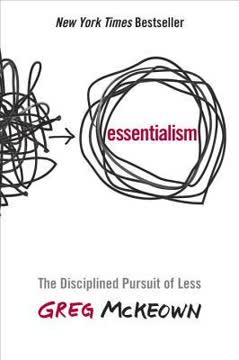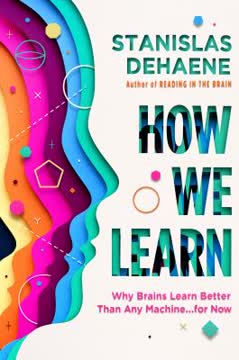Key Takeaways
1. Reverse Engineering: The Secret Weapon of Innovators
Jobs believed he'd been offered a glimpse of the future, and he wasn't about to wait until Xerox figured it out.
Unlocking hidden patterns. Reverse engineering is the process of deconstructing successful works to understand their underlying principles. This approach has been used by innovators across various fields, from technology to art. By systematically taking things apart and exploring their inner workings, creators can extract valuable insights and apply them to their own work.
Historical examples. Steve Jobs famously reverse-engineered Xerox's graphical user interface to create Apple's revolutionary Macintosh computer. Similarly, Google's founders applied the academic citation model to organize web information, leading to the creation of their groundbreaking search engine. Even the invention of the printing press resulted from combining existing technologies in a novel way.
Beyond technology. Reverse engineering isn't limited to the tech world. Writers like Malcolm Gladwell analyze successful articles to uncover effective structures. Musicians study chord progressions of hit songs. Chefs deconstruct popular dishes to understand flavor combinations. By breaking down exemplary works in any field, creators can identify patterns and formulas that contribute to success.
2. Decoding Greatness: Collect, Analyze, and Evolve
The first step to achieving greatness is recognizing it in others.
Build your collection. Start by identifying and collecting examples of greatness in your field. This could be articles, designs, products, or performances that you admire. Create a personal "museum" of excellence that you can revisit for inspiration and study.
Spot the difference. Analyze your collected works to identify what makes them unique. Compare outstanding examples to average ones to pinpoint key ingredients that contribute to their success. Look for:
- Structural elements
- Stylistic choices
- Underlying patterns
- Distinctive features
Create your blueprint. Once you've identified patterns, develop a high-level outline or blueprint of the successful works. This abstraction helps you see beyond surface details and understand the core principles at play.
3. The Vision-Ability Gap: Embracing the Struggle
What nobody tells people who are beginners—and I really wish someone had told this to me—is that all of us who do creative work, we get into it because we have good taste.
Recognize the gap. Understanding and appreciating great work often comes before the ability to produce it. This disparity between vision and current skill level can be frustrating, but it's a natural part of the creative process.
Persistence is key. Many aspiring creators quit when faced with this gap, discouraged by the difference between their taste and their output. However, this gap is actually a sign of potential. It indicates that you have the vision necessary for greatness, even if your skills haven't caught up yet.
Embrace the journey. Instead of being demoralized by the gap, use it as motivation. Your ability to recognize quality work is a crucial first step. With continued practice and learning, your skills will gradually align with your taste, leading to significant improvements in your craft.
4. The Scoreboard Principle: Measure to Improve
Measurement begets improvement.
The power of metrics. Tracking key performance indicators (KPIs) is not just for businesses. By identifying and monitoring crucial metrics in your personal and professional life, you can drive significant improvements. Metrics provide clarity, motivation, and a sense of progress.
Choose wisely. Select metrics that truly matter for your goals. Avoid "vanity metrics" that look good but don't contribute to meaningful progress. Consider tracking:
- Behaviors (actions you can control)
- Outcomes (results of your efforts)
- Short-term and long-term measures
- Both positive and negative indicators
Evolve your scoreboard. Regularly review and update your metrics as your skills and goals change. What you measure should evolve along with your progress to ensure continued growth and relevance.
5. Intelligent Risk-Taking: Minimizing Failure's Cost
Stop wasting energy trying to build up the courage to take risks. It's far easier to take risks when the price of failure is negligible.
Reduce the stakes. Instead of focusing on building courage, find ways to minimize the cost of failure. This approach allows for more frequent experimentation and learning opportunities.
Strategies for low-risk experimentation:
- Test with a small audience before scaling up
- Use pseudonyms to try new approaches without risking reputation
- Pre-sell ideas before fully developing them
- Diversify your efforts across multiple projects
Learn from business. Many successful companies use these strategies to innovate. For example, tech startups often release "minimum viable products" to gauge interest before full development. Authors may test book titles using online ads before committing to a final choice.
6. Three-Dimensional Practice: Past, Present, and Future
We don't grow when we're enjoying ourselves—we learn best when we are challenged, struggling, and occasionally failing.
Reflective practice (Past). Regularly analyze your past experiences and performances. Use journaling or structured review sessions to extract lessons and insights from what you've already done.
Deliberate practice (Present). Focus on specific aspects of your performance that need improvement. Break down complex skills into component parts and practice them individually. Seek immediate feedback and make incremental adjustments.
Mental practice (Future). Use visualization and mental rehearsal to prepare for future performances. Imagine yourself executing skills perfectly, and also practice overcoming potential obstacles in your mind.
Combine all three. The most effective practice regimens incorporate elements from all three dimensions. This comprehensive approach accelerates skill development and prepares you for real-world challenges.
7. Leveraging Feedback: From Experts and Non-Experts
Experts aren't the only people who can help you improve—nonexperts can be just as valuable. The trick is to invite the right audience, ask for advice instead of feedback, and arrive with a series of strategic questions geared toward improvement.
The expert paradox. While experts possess deep knowledge, they often struggle to communicate effectively with novices. The "curse of knowledge" makes it difficult for them to relate to beginners' perspectives.
Strategies for learning from experts:
- Ask about their journey and process
- Seek specific examples and analogies
- Request demonstrations when possible
- Use "repeat backs" to confirm understanding
Harnessing non-expert feedback. General audiences can provide valuable insights, especially regarding initial impressions and emotional responses. To make the most of this feedback:
- Clearly define your target audience
- Ask for advice rather than general feedback
- Pose specific, improvement-focused questions
- Time your requests strategically (early concept testing and late-stage refinement)
Balancing perspectives. Combine insights from experts and non-experts to get a comprehensive view of your work. This approach helps you refine both technical aspects and broad appeal.
Last updated:
FAQ
What's Decoding Greatness about?
- Reverse Engineering Success: The book explores how successful individuals reverse engineer achievements to replicate and innovate. It emphasizes that greatness is often derived from analyzing and learning from existing successes.
- Real-World Examples: Ron Friedman provides anecdotes from figures like Steve Jobs and Bill Gates, showing how they used reverse engineering to create groundbreaking products.
- Practical Application: Readers are equipped with strategies to apply reverse engineering in their own lives, enhancing creativity and skill acquisition across various fields.
Why should I read Decoding Greatness?
- Skill Enhancement: The book offers a framework for improving performance by learning from the best, making it valuable for anyone looking to innovate.
- Broad Applicability: Its principles are relevant to a wide range of professions, encouraging a mindset of continuous learning and adaptation.
- Engaging Narrative: Filled with compelling stories and examples, the book keeps readers interested while imparting valuable lessons.
What are the key takeaways of Decoding Greatness?
- Reverse Engineering is Key: It’s a powerful tool for innovation, allowing individuals to uncover hidden patterns and strategies for success.
- Balance Originality and Familiarity: The concept of "optimal newness" helps blend familiar elements with new ideas to create something unique.
- Metrics Matter: Tracking performance metrics is crucial for identifying areas for growth and making informed adjustments.
What specific methods does Decoding Greatness suggest for reverse engineering?
- Deconstructing Successful Works: Break down admired works into fundamental components to identify key features and techniques.
- Copywork Technique: Replicate the work of masters to understand their techniques and develop a unique style.
- Testing Ideas: Pre-test ideas in low-risk environments to gather feedback and make adjustments before full-scale implementation.
How does Decoding Greatness define the vision-ability gap?
- Definition: The vision-ability gap is the disparity between high standards for one's work and current skill level, often leading to frustration.
- Impact on Creativity: This gap can discourage individuals, but recognizing it is crucial for personal growth and development.
- Strategies to Bridge the Gap: Focus on actionable steps and metrics to gradually close the gap and improve skills.
What role do metrics play in Decoding Greatness?
- Tracking Performance: Metrics are essential for measuring progress and identifying areas for improvement.
- Leading vs. Lagging Indicators: Understanding both types helps focus on actions that drive success.
- Creating a Scoreboard: Develop a personal scoreboard to track metrics, providing clarity and motivation.
How does Decoding Greatness address the concept of failure?
- Embracing Failure as Learning: View failure as an essential part of the learning process, using setbacks as opportunities for growth.
- Testing Ideas in Low-Stakes Environments: Experiment without significant consequences to refine concepts based on feedback.
- The Role of Metrics: Track performance metrics to identify failures and areas for improvement, adjusting strategies accordingly.
What are some examples of reverse engineering in Decoding Greatness?
- Steve Jobs and Xerox: Jobs reverse engineered the Alto computer, leading to the creation of the Macintosh.
- Judd Apatow's Comedy: Apatow deconstructed comedians' work to develop his own style, using interviews as a blueprint for success.
- David Chang's Culinary Innovations: Chang analyzed successful dishes to create new recipes that evoke nostalgia and emotional responses.
What are the best quotes from Decoding Greatness and what do they mean?
- "Creativity is just connecting things.": Steve Jobs emphasizes that innovation often comes from combining existing ideas.
- "Ninety percent of everything is crud.": Sturgeon’s Law reminds us that mediocrity is common, encouraging realistic expectations and striving for excellence.
- "Measurement begets improvement.": Highlights the importance of tracking metrics to enhance performance and identify growth areas.
How can I apply the concepts from Decoding Greatness in my own life?
- Identify Role Models: Analyze the successes of individuals you admire to uncover valuable insights.
- Set Clear Metrics: Establish specific metrics to track progress and stay accountable to your goals.
- Experiment and Iterate: Test new ideas and approaches, using feedback to refine your work and improve skills over time.
What role does feedback play in Decoding Greatness?
- Valuable Learning Tool: Feedback is critical for learning, providing insights that lead to significant improvements.
- Quality Over Quantity: Seek specific, actionable feedback rather than vague praise to focus on areas needing development.
- Emotional Receptivity: View feedback as an opportunity for growth, not a personal attack, to overcome emotional challenges.
What specific methods does Decoding Greatness recommend for personal growth?
- Reflective Practice: Engage in structured self-reflection to identify strengths and areas for improvement.
- Mental Imagery: Use visualization techniques to enhance confidence and performance in real-life situations.
- Collecting and Analyzing Models: Study examples of excellence to identify key elements of success and adapt them to your work.
Review Summary
Decoding Greatness receives mostly positive reviews, with readers praising its practical advice, engaging stories, and insights on reverse engineering success. Many appreciate the book's focus on learning from others' achievements and adapting proven formulas. Readers find the strategies actionable and applicable across various fields. Some criticize the book for lacking originality or feeling disjointed at times. Overall, reviewers commend the author's clear writing style, real-world examples, and emphasis on metrics, feedback, and continuous improvement.
Similar Books





Download PDF
Download EPUB
.epub digital book format is ideal for reading ebooks on phones, tablets, and e-readers.





